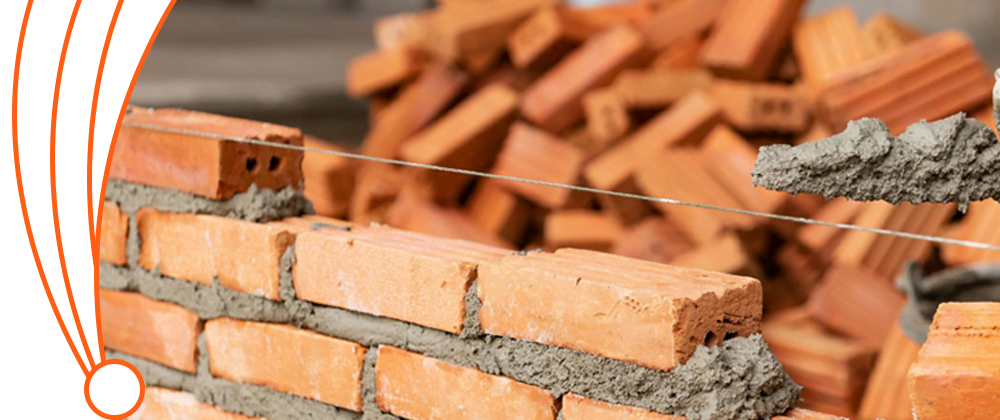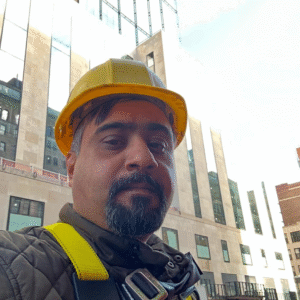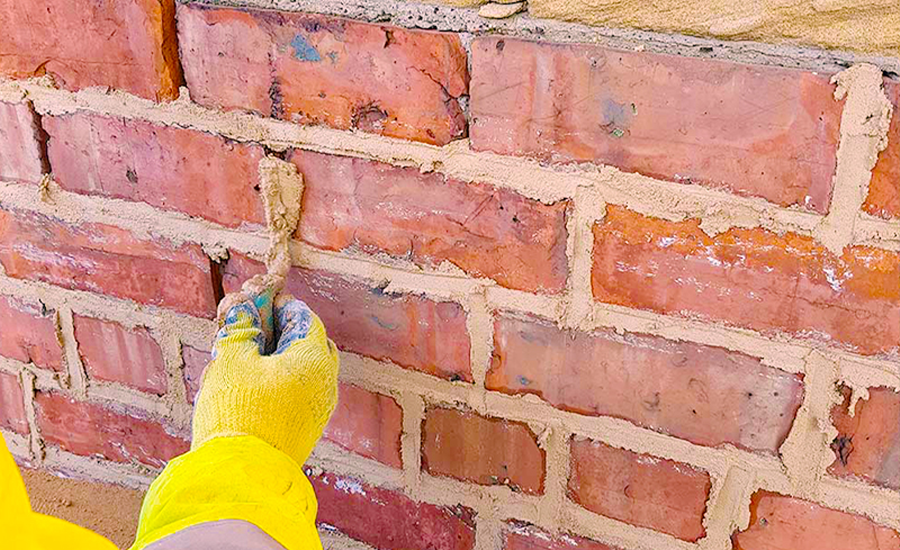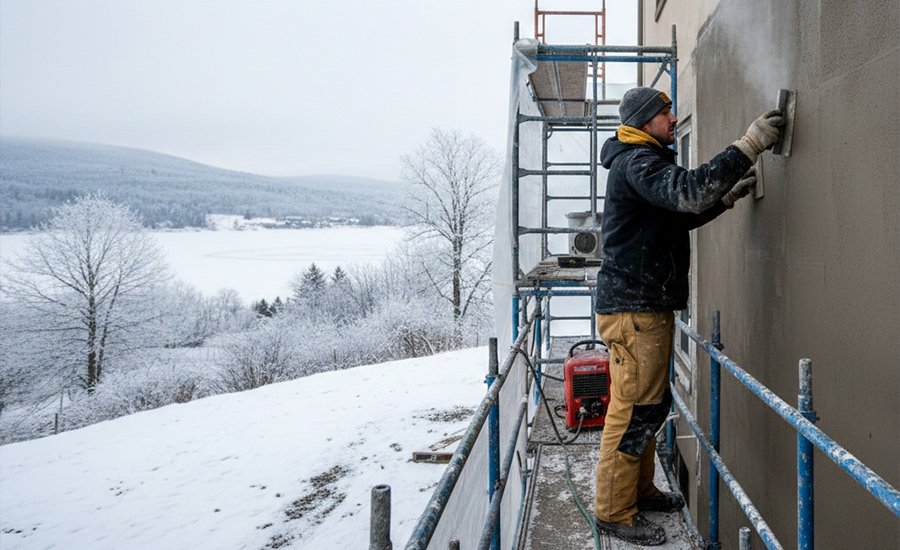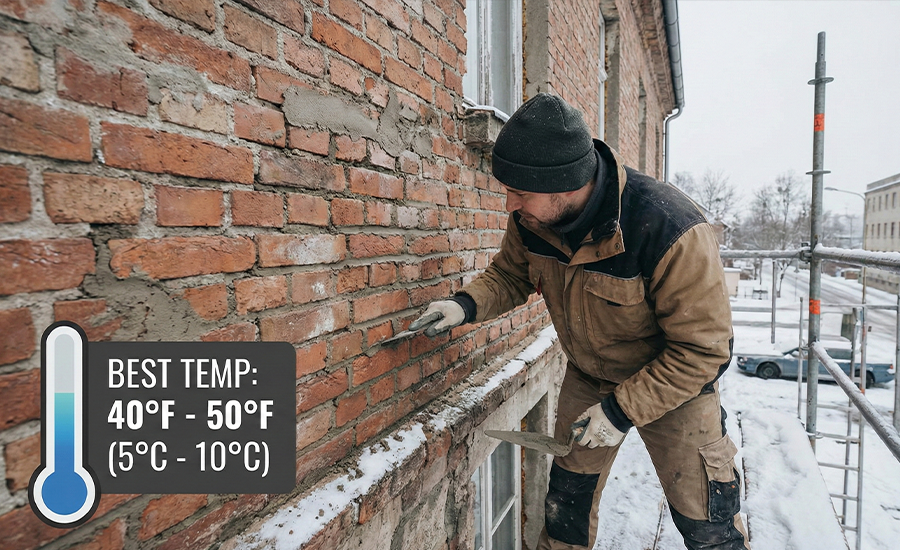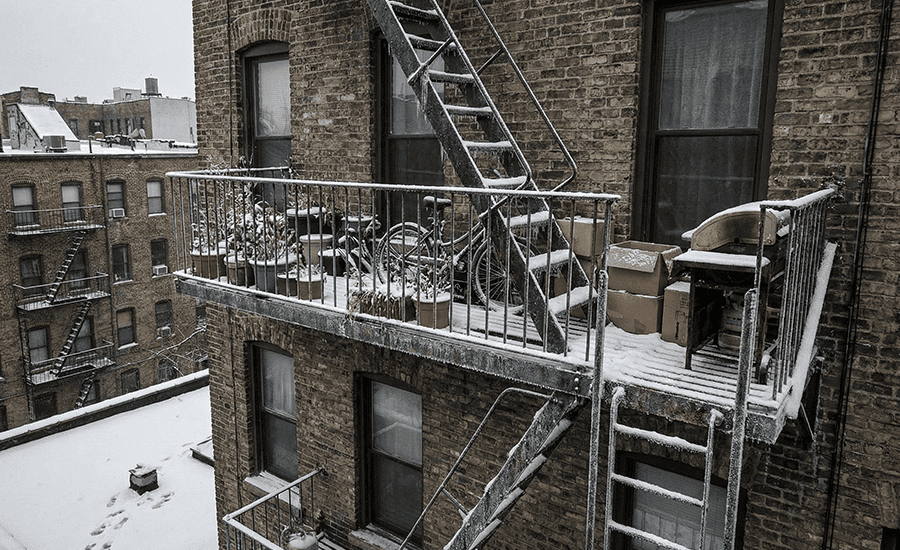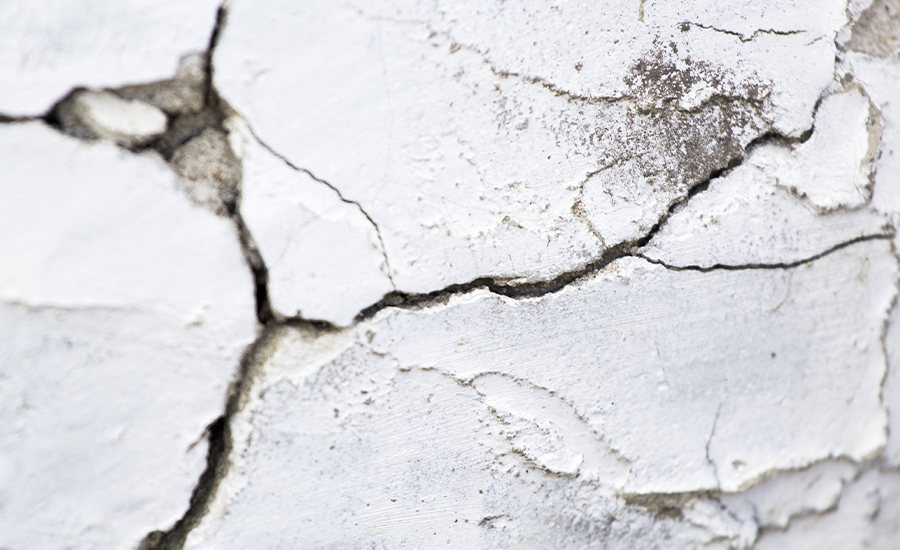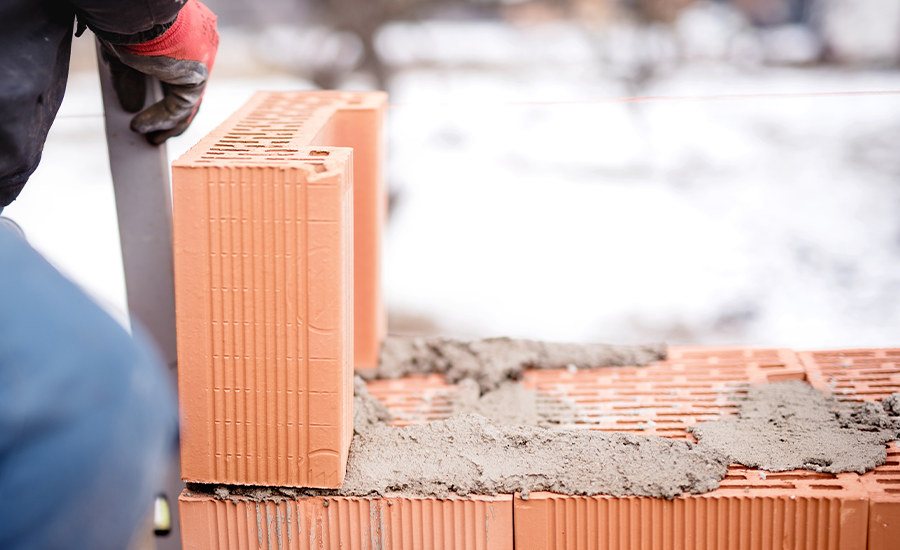The maintenance and repair of the brick façade is crucial for the longevity of the built fabric of Manhattan and the maintenance of iconic New York City architecture. After some time, the mortar joints of the building will crack and allow water penetration, structural failure and high cost in repair. Based on years of experience mending broken bricks, Sardar Restoration Corp performs repointing services for bracketing structures in Manhattan and the other boroughs of NYC. Let’s explore this in detail:
Difference Between Brick Pointing And Repointing Brick
Here is the chart differentiating between brick pointing and repointing. To understand repointing, you must first learn the following: “What is brick pointing?” in detail.
| Aspect | Brick Pointing | Repointing Brick |
|---|---|---|
| Definition | Applying mortar to new joints | Repairing old mortar joints |
| Timing | During initial brickwork | After mortar deterioration |
| Purpose | Aesthetic and structural finish | Restore structural integrity |
| Condition | New Construction | Existing brickwork |
| Mortar Removal | Not required | Required before a new application |
| Tools Used | Trowels, jointers | Raking tools, brushes, trowels |
| Focus | Fresh mortar and neat finish | Replacing damaged mortar |
| Outcome | Ensures proper sealing | Prolongs lifespan of brickwork |
| Cost | Included in construction cost | Separate maintenance cost |
How To Repoint Brick?
Repointing brickwork helps maintain the longevity and aesthetic value of the structure made from the bricks. First, ensure that the building’s temperature is within the legal range for cured mortar, usually between 40°F and 100°F, preferably for two to three days. Any other special guide should be obtained from the manufacturer’s manual.
| Preparation and Materials | Details |
|---|---|
| Materials Required | Mortar mix (Type O is ideal for repointing non-load-bearing walls) |
| Water | |
| Drop cloth | |
| Tools Needed | Skate-style wheeled joint raking tool |
| Pointing trowel | |
| Hawk Board | |
| Masonry and wire brushes | |
| Margin trowel | |
| 5-gallon bucket |
To make your brick repointing last for years, it’s essential to use expert techniques. Learn the best methods to ensure durability and stability in our guide on long-lasting brick repointing techniques.
Steps to Repoint Brickwork
Before jumping into the process, it’s essential to understand each step carefully. Here’s a simplified breakdown to guide you through proper brick repointing.
Step 1: Assess Mortar Depth
Measure the width of the brick joints to determine how deep the old mortar needs to be removed. Use the following guidelines:
| Joint Width vs Mortar Removal Depth | |
|---|---|
| 1/4 inch | 1/2 inch |
| 3/8 inch | 3/4 inch |
| 1/2 inch | 1 inch |
Step 2: Set the Raking
Cut a piece of pin corresponding to the number of measurements taken and fit it to the raking tool as needed.
Step 3: Remove Vertical Mortar
Start with the head and then move to the next subhead, and so on. Then, use the raking tool to rake out the mortar from vertical joints. It is advisable to brush the joints occasionally with a masonry brush to clear deposits on the surface and get a good view of the appropriate joint.
Step 4: Eliminate horizontal mortar joints
Do it on the horizontal joints to remove excess material after clearing the vertical joints. It starts from the head, and images are built from the head down through the body. Masonry brush- use it to sweep the joints often.
Step 5: Clean the Joints
Sometimes, some mortar may stick to the joints and be hard to remove; it can be scraped off using a wire brush. After this, the joint should be cleaned using a masonry brush to accept the fresh joint mortar.
Step 6: Mix the Mortar
The mortar is prepared in a bucket with water to eventually achieve a peanut butter-like consistency. It’s preferable to lay down Type O mortar for pointing the non-structural elements since it’s softer and also doesn’t damage old bricks.
Pro Tip
“When the wall is faced with brick, never use flush or recessed mortar with it, thus leaving the brick face to slightly overhang for added strength.”
Choosing the right mortar type is crucial before mixing. Discover which mortar is best for repointing old bricks and why lime-based options are preferred.
Step 7: Apply Mortar to Horizontal Joints
- Scoop a small amount of mortar onto the hawk board.
- Hold the hawk below the joint and use the pointing trowel to press and tamp mortar into the horizontal joints.
Step 8: Apply Mortar to Vertical Joints
Follow the same process for the shorter vertical joints, ensuring they are filled and compacted.
Step 9: Let the Mortar Partially Dry
Let the mortar set for about 30-45 minutes. Using your finger, probe the surface of the consistency to check how firm it gets when pressed. If the mortar does not sink to the level of the block joint, it is good for jointing the blocks.
Step 10: Strike the Joints
Use the edge of the margin trowel to smooth the mortar, shaping it to protrude slightly from the brick face.
Step 11: Final Repointing
- For vertical joints, press the trowel into the mortar and slide it along the joint to smooth and compress.
- Repeat this process for the horizontal joints.
Step 12: Brush Away Excess Mortar
Use a masonry brush to remove excess mortar from the brick surface gently. Be careful not to disturb the newly applied mortar.
To make sure your efforts don’t go to waste, it’s equally important to know what can go wrong during repointing — explore the common mistakes here.
Special Tips
- Avoid working in extremely hot or cold weather to ensure proper mortar curing.
- Never overfill the joints; excess mortar may weaken the bond.
- Maintain consistent joint depths to preserve the structure’s integrity and appearance.
When To Repoint Brick?
Repointing is necessary to maintain the stability and appearance of brick structures. Choosing the best time for brick repointing is equally important to ensure the mortar cures properly, stays compliant with NYC city regulations, and enhances long-term durability. Watch for these signs that your mortar needs attention:
- Mortar is breaking apart or crumbling.
- Tiny holes have developed in the mortar joints.
- Cracks appear, disrupting the smooth surface.
- Erosion of the mortar has exceeded 1/4 inch in depth.
- Mortar is pulling away from the bricks, leaving gaps.
Want to know how experts decide it’s time for repointing? Read our guide on how professionals assess the need for repointing.
Essential Safety Measures
When working on brick repointing, it is important to contain any risks that harm the workers. Personal protective measures that must always be worn include eye protection and dust masks to avoid too much exposure to dust. Wear gloves when working with fresh mortar since the lime is hydrated and easily scratches the skin.
Tools You’ll Need
Prepare these tools and materials to ensure efficient and effective repointing:
- A joint raker with wheels for precision work
- Masonry and wire brushes for cleaning joints
- Hammer for chiseling away old mortar
- Hawk board to hold fresh mortar
- Measuring tape for accuracy
- Bucket for mixing mortar
- Garden hose for cleaning the work area
- Drop cloth to protect nearby surfaces
- Personal protective equipment, including gloves, dust mask, and safety glasses
Protect Your Work Area
Place a tarp on the floor or ground where you are working to collect falling debris and keep the environment as clean as possible. If you live in areas with harsh coastal weather, like Staten Island, frequent brick repointing for Staten Island homes may be necessary to maintain the structural integrity of your property.
What Happens If You Don’t Repoint Brickwork?
Procrastination in repointing brickwork is a chain that results in a series of deteriorating effects on the structural aspect, aesthetic value, and durability of the brickwork structure. One of the most overlooked yet serious effects is brick spalling, which repointing can effectively prevent. Let me explain in detail what can happen:
Water Infiltration
Damaged mortar allows water to penetrate through the brick joints, which can seep into the underlying structure. Over time, this moisture can cause:
- Damp walls, leading to mold and mildew growth inside the property.
- Freeze-thaw damage in colder climates, as trapped water expands and contracts with temperature changes, causing further cracking and deterioration. This directly impacts the overall strength and service life of brick structures—discover how repointing extends the lifespan of brickwork with proven strategies and maintenance insights.
Learn how freeze-thaw cycles impact masonry and how repointing helps protect your structure in this detailed freeze-thaw repointing guide.
Structural Instability
Mortar holds the bricks together, ensuring the stability of the structure. When mortar crumbles or erodes:
- It may also cause bricks to become loose, slide, or even drop off, mainly because the walls may be crucial support structures. Repointing can also effectively fix cracks in brick walls, reinforcing the structure and preventing further damage. Explore how repointing helps with brick cracks.
- The overall structures lose their strength and, in extreme cases, collapse, as evidenced by their collapse when experiencing severe force.
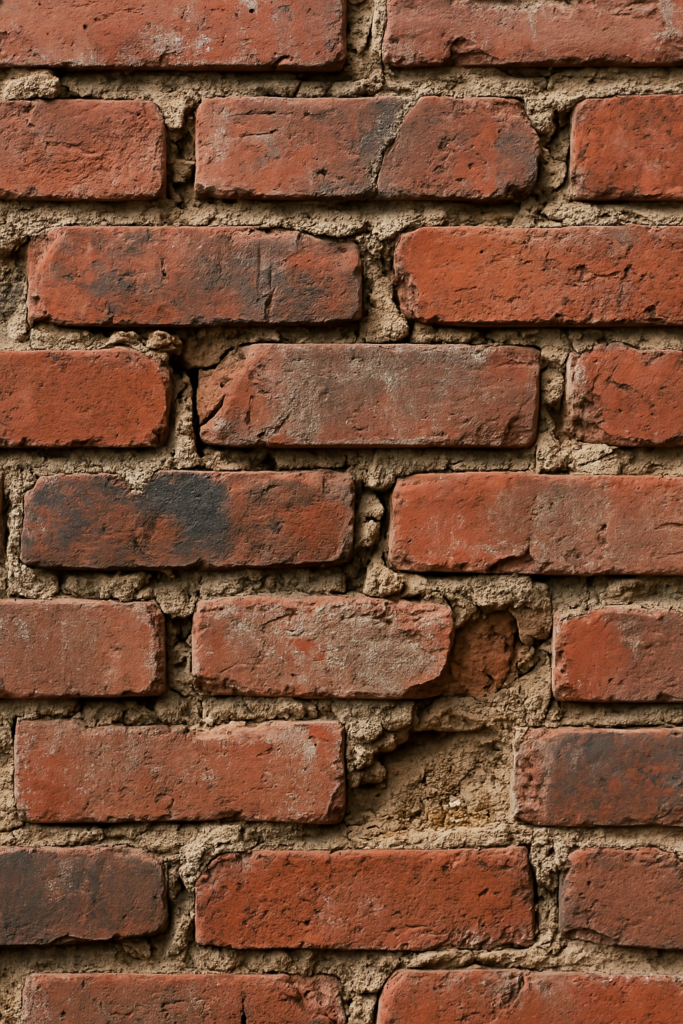
Loose or shifting bricks are often early signs of structural instability. Learn how repointing can fix loose or shifting bricks and restore your masonry’s strength before major damage occurs.
Increased Repair Costs
Neglecting repointing or doing it improperly leads to more extensive damage over time. Improper repointing can damage your brick structure and cause problems like weakened masonry, moisture issues, or even complete failure. What begins as minor mortar erosion could escalate into:
- Exchanging certain sections of the wall or even the bricks included in it.
- Examples include consideration of structural repairs, which are incredibly costly compared to mere pointing.
Aesthetic Degradation
Eroded mortar and loose bricks can make the structure look old and poorly maintained. This can:
- Lower property value.
- It affects the even worse curbs for businesses or anyone with a house to sell.
Did you know?
👉 Repointing not only enhances the visual appeal of your property but also significantly boosts its resale value by strengthening its structure and making it market-ready.
Compromised Insulation and Energy Efficiency
Gaps in mortar joints allow air to pass through, reducing the structure’s thermal efficiency. This leads to:
- Higher heating and cooling costs.
- A less comfortable indoor environment.
Bonus Tip: Repointing also helps regulate indoor temperature and improves energy efficiency in brick homes. Read how repointing reduces energy bills in brick homes.
Pest Intrusion
Cracks and gaps in the mortar provide entry points for insects and small animals, such as ants, wasps, and even rodents. Once inside, these pests can cause additional damage and be difficult to remove.
Still wondering if repointing is truly essential? Our guide on Is Brick Pointing Necessary? explains why timely action is a must for every brick property.
Fire Resistance Compromise
When mortar deteriorates, it can create hidden air gaps that allow heat and smoke to spread faster during a fire. Proper repointing not only restores structural strength but also helps maintain the building’s fire-resistant performance by sealing those critical pathways.
To understand how repointing enhances safety, see how it contributes to fire resistance in brick buildings.
Preserve Manhattan’s Historic Brick Walls with Sardar Restoration Corp – Serving NYC and All Boroughs!
Brick-and-mortar buildings are part of the New York City landscape, particularly Manhattan, which houses some of the city’s most famous landmarks. However, aging and environmental factors erode the structure of the buildings. Sardar Restoration Corp has specialized in repointing brick walls to maintain such structures’ aesthetic and structural value.
Why Choose Sardar Restoration Corp in Manhattan?
- Maintain Manhattan’s Charm: Our expert team carefully matches mortar to restore historic aesthetics.
- Durable Solutions: Replace crumbling mortar to prevent water infiltration and structural damage.
- Enhanced Energy Efficiency: Repointed walls seal drafts, improving insulation and reducing energy costs.
- Borough-Wide Coverage: Proudly serving all five boroughs—Brooklyn, Queens, The Bronx, Westchester and Manhattan.
Our Unique Approach to Manhattan and NYC’s Brickwork
With extensive experience across Manhattan and NYC’s boroughs, we understand the city’s architectural diversity. From pre-war townhouses to industrial buildings, we use precision and care to deliver unmatched results that blend craftsmanship and longevity.
We also offer expert brick repointing services for Nassau County coastal homes to protect properties against salt-laden air, moisture, and extreme weather conditions, helping homeowners maintain long-term structural integrity. Our services also cover Suffolk County brick repointing services, where coastal properties face similar environmental challenges demanding regular repointing to preserve their structural value.
Schedule Your Manhattan Repointing Service Today!
Protect the integrity of Manhattan’s historic structures with Sardar Restoration Corp.
Wherever you are, our services are tailored to meet local needs. Contact us today at (+1) 917-355-8556 or sardarrestoration@gmail.com, or visit us at 2770 Fish Ave, Bronx, NY 10469, United States. Let us bring excellence to your next project!
FAQs
Can you repoint bricks yourself?
While it’s possible to attempt DIY repointing, it’s a complex task best entrusted to professionals for durable, high-quality results.
Read the full DIY guide here: Can You Repoint Bricks Yourself?
What are the common mistakes when repointing brickwork?
Errors such as using the wrong mortar mix or improper joint filling can lead to costly issues down the line.
Explore the 6 most common repointing mistakes and how to avoid them in our complete guide.
Is it expensive to repoint brick?
Repointing is a cost-effective alternative to major repairs, though the overall price can vary based on the project size.
For a detailed breakdown of what affects the cost of repointing, check out our full guide.
Is it worth repointing a house?
Repointing not only improves your property’s aesthetic appeal but also extends its structural integrity, making it a valuable investment.
For a detailed breakdown of its structural and financial benefits, explore our full blog on why repointing a house is worth the investment.
How does repointing prevent water damage?
Repointing seals gaps in the mortar, preventing moisture infiltration and protecting the integrity of your property.
For a detailed guide, read how repointing effectively prevents water damage in NYC properties.
Can repointing be done on historic buildings without damage?
Yes, when done correctly, repointing preserves the historical value of buildings, maintaining both form and function.
For a detailed guide on how repointing can be done safely on historic buildings without compromising their character, read this full article on repointing historic structures.
What are the signs of bad mortar that indicate repointing is required?
Signs include cracked, loose, or missing mortar and visible gaps or water stains.
You can also explore our complete guide on the signs of bad mortar that indicate repointing is required to better assess your property’s condition.
What’s the difference between repointing and tuckpointing in brick masonry?
Repointing involves removing damaged mortar from existing joints and replacing it with new mortar to restore structural integrity, while tuckpointing is a more decorative process that uses two contrasting mortar colors to enhance the visual lines of the brickwork.
If you’re unsure which one your property needs, explore our full guide on the difference between repointing and tuckpointing.
